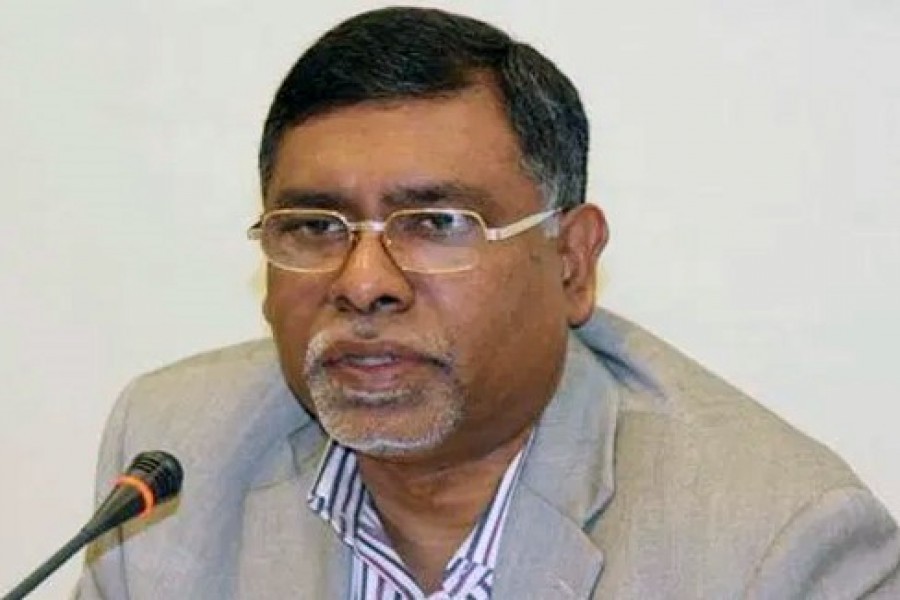At least 14 Covid-patients reportedly died in the country's two district hospitals for lack of high-flow oxygen supply between Wednesday and Friday.
Seven of the ill-fated patients breathed their last at the Covid dedicated Mohammad Ali Hospital at Bogra which is one the best hospitals in the northern region. The hospital did not have enough nasal cannulas that channel oxygen in high flow to critical patients. Only two such medical devices were available but they needed more to deal with the situation.
Seven more died earlier at the Sathkhira Medical College Hospital when the central oxygen supply suddenly collapsed. Relatives of the victims have alleged that the hospital authorities did not use oxygen cylinders for patients. Local-level committees have been formed to probe the reasons behind death.
It is rather surprising that the Ministry of Health or the Directorate General of Health Services did not issue any statement on the tragic death of the Covid patients.
The reason for these agencies not issuing any statement could be that it would contradict their earlier claims made in public about the achievements on the corona management front.
Health Minister Zahid Maleque at a press briefing at the Bangladesh College of Physicians and Surgeons (BCPS) on April 27 this year said Bangladesh was fairly in good conditions in oxygen supply and production.
He said if the number of Covid patients reaches 21,000, then the country would not be able to meet the demand for oxygen.
The number of Covid patients on Saturday last was 7,233 in general beds and 731 in ICU beds across the country. If the minister's statement was correct, there should have been no crisis of oxygen in the hospitals.
He claimed that the government had set up oxygen plants in 100 hospitals and they would complete installation of the same in some other hospitals within '10-15 days'.
According to reports, 37 district hospitals are yet to have a centralised oxygen supply system.
The DGHS press release issued last Saturday said hospitals had 1,546 beds equipped with high-flow nasal cannulas and 1,632 with oxygen concentrators.
One has reasons to take the statistics dished out by the health minister and the DGHS with a grain of salt.
A story published in one of the country's leading vernacular dailies a couple of days back could be cited as a reason for being sceptical about the government's statistics on health.
According to the report, Sadar hospital of Narail, a Covid hotspot, received two ventilators in December last year and two more in February this year. The ventilators are lying in the hospital premises unpacked when Covid patients with severe breathing problems have expired in recent days. The superintendent of the hospital said the lack of ICU facilities has made the medical equipment redundant. Medical experts, however, said the ventilators could be used even without ICUs for saving lives.
Similarly, the ICU unit of the Jamalpur district general hospital has remained under the lock and key for at least five years. Investigations would reveal many such instances of neglect and incompetence on the part of the hospital authorities and the relevant directorate and the ministry.
The health services in districts other than those in the administrative control of the Dhaka division are still highly inadequate. The situation is almost opposite to what the government has been claiming. Rush of Covid patients from the affected districts to Dhaka to get treatment is a pointer to that fact. Even a couple of weeks back, most general beds and ICUs at the DNCC Covid hospital were empty. They are now almost full. The director of the hospital said 70 per cent of the patients were from different districts. This development is true in other government hospitals in Dhaka city. The Covid patients are not getting proper treatment in government hospitals in districts of Rajshahi, Khulna, Mymensingh and Barishal divisions for a severe shortage of necessary life-saving equipment.
Reports being published in some national dailies for the past few days have highlighted the shortage of essential medical equipment in hospitals outside the Dhaka division. More than 50 per cent of hospitals in the country do not have ICU facilities and 75 per cent of the ICUs are located in the Dhaka division. Over 77 per cent of the Covid deaths during the current week, reportedly, have been in districts outside the Dhaka division where ICU facilities are scarce.
Even there is discrimination with Covid diagnostic tests. About 70 per cent of RT-PCR-based testing facilities are in the Dhaka division. Then again, several testing facilities in outlying districts remain out of order for days together.
Volumes have been said and written about the inefficiency and lack of actions on the part of the health ministry and relevant other agencies, but the situation has changed little on the ground. There is no denying that it takes time in making available some medical equipment and create human resources with the necessary skill. But in a health emergency like the ongoing one, people expect sincerity and speed from the health sector officials. Unfortunately, the latter have failed to show that. The DGHS has not even strengthened its monitoring functions.
So, the criticism and anger that the incumbent health minister faced in parliament Saturday last from the opposition lawmakers was nothing unusual under the prevailing circumstances. Everybody expected more dynamism from the health ministry. The situation in India was an eye-opener and the government got time to make preparations.
As the Covid situation remains critical, the health ministry should despatch teams to the most affected districts to assess the need of the hospitals there. It should then make the best efforts to make those available.


